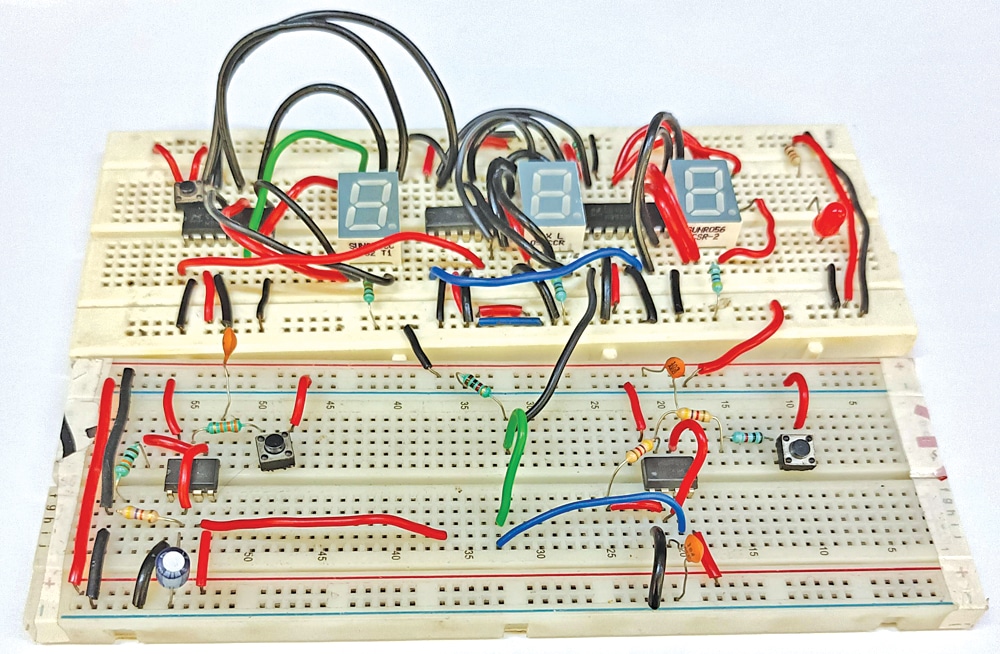
Consider this digital stopwatch with dual timers if you are seeking a dual stopwatch that allows you to measure two distinct time intervals. It features two independent displays, which can be selected using the mode change switch. Here is a general guide on using this dual stopwatch:
1. Start/stop functionality: Most dual stopwatches have separate buttons to start and stop each timer independently. In this stopwatch, you also press the ‘Start’ button for each timer to initiate time measurement and release the same switch to stop the stopwatch. (Here we use push-to-on switches S1 and S2.)
2. Mode change functionality: Some stopwatches have a mode change function that allows them to change time in either seconds or milliseconds. This flexibility proves beneficial in various sports and activities. (Here we use a single-pole and double-throw (SPDT) switch S3.)
3. Reset: There is a reset switch to reset each timer when a time has already been displayed, setting the timers back to zero. (Here we use push-to-on switch S4.)
4. Display: This dual stopwatch uses a 3-digit display to show the elapsed time for each timer up to three digits. This allows measuring time in increments of 100 milliseconds or 100 seconds, utilizing three common cathode display (LTS 543)—DIS-1 through DIS-3.
POC Video Tutorial In English
POC Video Tutorial In Hindi
When selecting a dual stopwatch commonly available in sports equipment stores or with online retailers, look for features such as precision, durability, and ease of use. The presented dual stopwatch provides precision to count up to 100 milliseconds and 100 seconds, making it suitable for specific applications.
The author’s prototype on the breadboard is shown in Fig. 1.

Dual Stopwatch Circuit and Working
The circuit diagram of the dual stopwatch is shown in Fig. 2. It is built around two NE555 timers (IC1, IC2), three 4033 7-segment display drivers (IC3 through IC5), three common cathode 7-segment displays (DIS-1 through DIS-3), and several other components.






